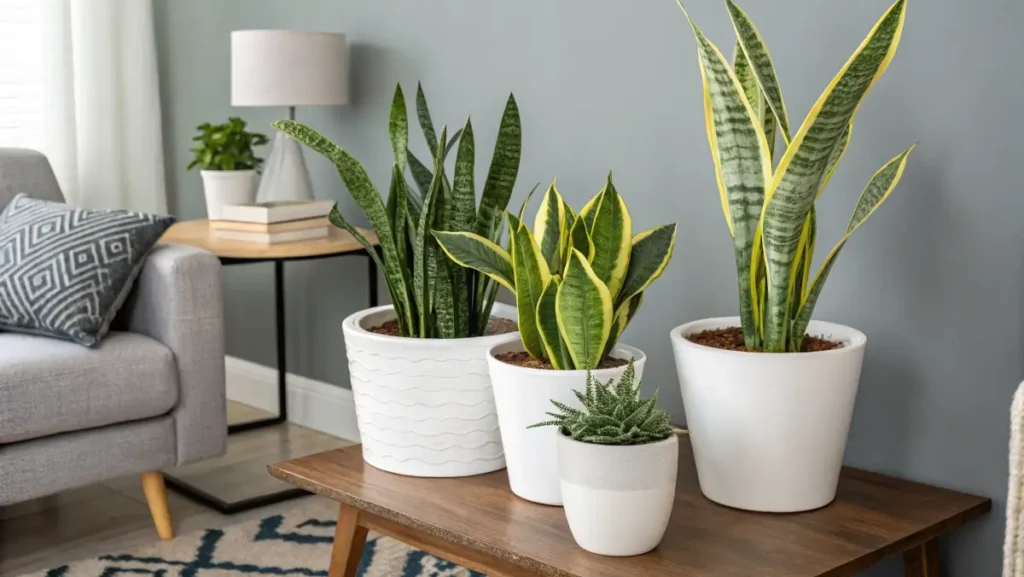
I’m so excited to chat about snake plant varieties! These amazing leaf-spearing wonders have been my companions for many years, and they continue to charm plant lovers worldwide.
In this blog post, I’ll explain how snake plant varieties differ, why they’re perfect for folks who prefer low-maintenance greenery, and what makes them stand out in modern home décor circles. Because we’re officially in the middle of spring, I’ve seen tons of new plant parents on social media showing off their snake plant varieties. I promise to keep this simple, casual, and helpful—like a friendly neighbor giving plant advice.
Table of Contents
Understanding the Basics
Common Names and Quick Background
You’ve probably heard them called “Mother-in-Law’s Tongue” or “Bowstring Hemp.” But many enthusiasts simply say these are part of the sansevieria types. Botanically, you might spot them labeled as Dracaena trifasciata, though it’s completely normal to still see them sold under “Sansevieria.” The essential point? All these snake plant varieties thrive in both bright and low-light spaces with minimal fuss.
I used to forget to water my first plant for weeks, yet it stayed alive and gorgeous—no complaints at all. That experience taught me why folks adore snake plant varieties: they store water in their leaves and endure the busiest schedules. If you’re prone to skipping a watering or two, these plants will forgive and forget every time.
Key Shared Features
- Tall, sturdy leaves often striped or mottled
- Low-light houseplant that still does well under brighter conditions
- Easy-care houseplants that handle occasional neglect
- Prefer potting mixes that drain well (like cactus soil)
They’re often labeled as air-purifying indoor plants. While results vary, it’s still nice to have a living accent piece that can tolerate lower humidity or less attention.
10 Popular Snake Plant Varieties
1. Sansevieria trifasciata ‘Laurentii’
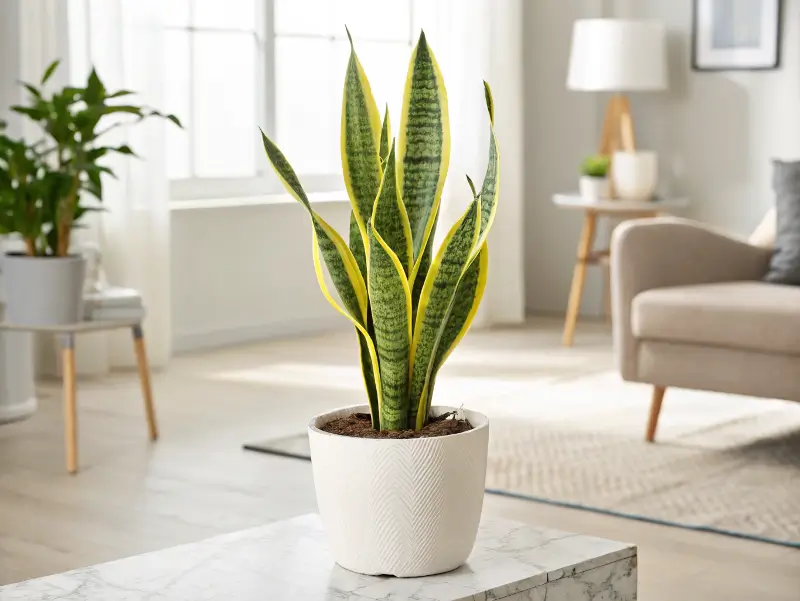
- Edges: Bright yellow borders on tall leaves
- Spotlight: Popular among snake plant varieties for beginners
- Tip: Let the top inch of soil go dry before watering
This one seems to be everywhere. Yet, I still love it because it screams “classic snake plant.” While traveling, I neglected mine for a month. No problem—it was totally fine.
2. Sansevieria trifasciata ‘Zeylanica’
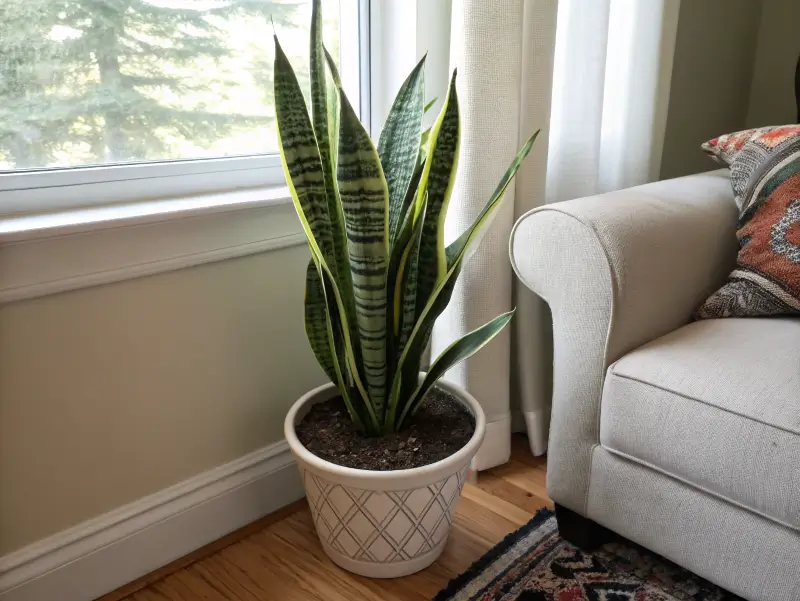
- Look: Dark leaves with wavy, lighter-colored bands
- Best Setting: Moderate to low light
- Watering: Be patient, water lightly, avoid soggy soil
If you fancy a subtle version among snake plant varieties, this might be the star. It blends seamlessly with any décor—especially if you lean toward simplicity.
3. Sansevieria ‘Moonshine’
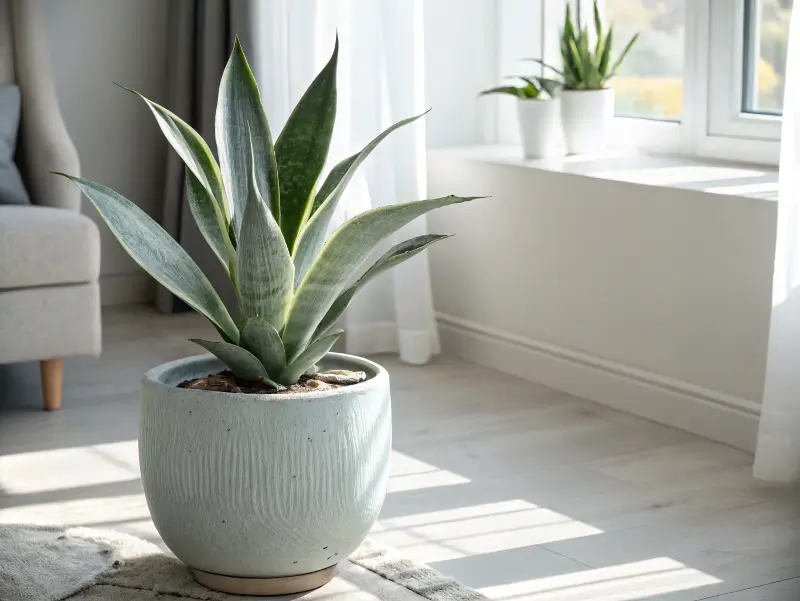
Pale silver-green leaves define this one, giving it a sleek, modern aura. I keep mine near a window for that subtle shimmer. Whenever folks visit, they ask, “Is that leaf color real?” Yes, indeed, and it’s downright mesmerizing.
4. Sansevieria ‘Black Coral’
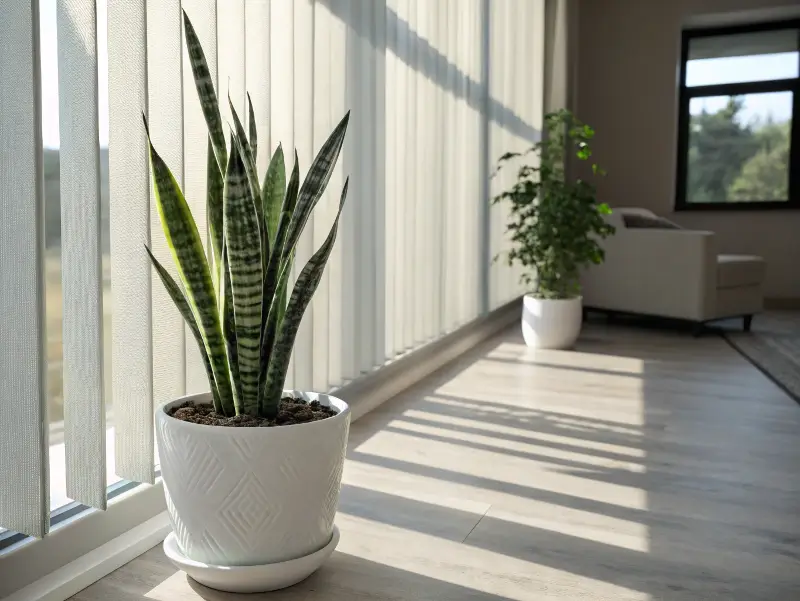
- Vibe: Dramatic stripes of deep green and gray
- Maintenance: Similar to other snake plant varieties
- Style Factor: Great in a minimalist pot for an edgy look
It’s the “rock star” in my living room—a total statement piece that pairs well next to white furniture. Water sparingly, and you’ll keep it rockin’ for years.
5. Sansevieria hahnii ‘Bird’s Nest’
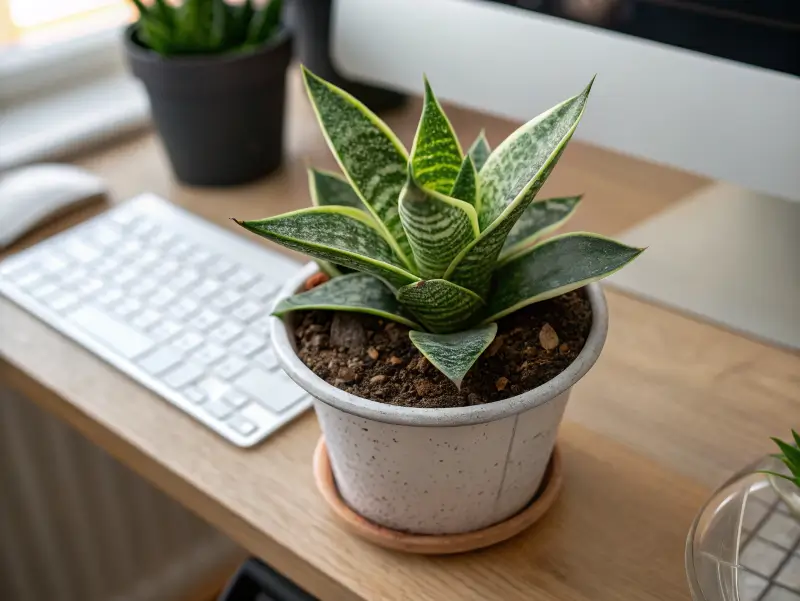
- Size: Short, rosette shape—fits desks or shelves
- Nickname: Also called “Bird’s Nest Sansevieria”
- Soil: Well-draining, succulent-friendly mix
I set a few in small pots scattered around my bookshelf. They look adorable—like tiny spiky cups. Trim away dead leaves occasionally and you’re all set.
6. Sansevieria cylindrica
These snake plant varieties have cylindrical leaves shooting straight up. Some folks braid them, which can be fun but must be done gently. I find they work well as conversation starters, especially when placed in an office environment.
7. Sansevieria masoniana ‘Whale Fin’
- Leaf Shape: One giant fin-like leaf
- Rarity Factor: Harder to spot in standard stores
- Light Needs: Medium to bright, water sparingly
I remember the day I found one at a local fair. People lined up to snag these fins. Whenever I have company over, they always ask, “What is that funky leaf?”
8. Sansevieria ‘Golden Hahnii’
Think of it as the golden-edged sibling of Bird’s Nest. Its compact rosette shape stays small, making it ideal for tight kitchen counters. If you like bright edges, you’ll love how they contrast with the leaf’s green core.
9. Sansevieria parva ‘Kenya Hyacinth’
Floral possibility? Yes, if you’re lucky, it might sprout small blooms that smell sweet. Otherwise, it’s a narrow-leaf variety that doesn’t hog space. Mine sits on a windowsill—super chill.
10. Sansevieria ‘Futura Robusta’
- Leaf Colors: Silver-gray bands
- Size: Medium, doesn’t get too tall
- Ease: Shares the same sturdy traits as other snake plant varieties
It gives off a tidy, crisp look that complements modern and boho-chic styles alike. If you’re short on space, its manageable growth pattern helps a lot.
Rare and Unique Snake Plant Varieties
Collector-Favorite Finds
For plant geeks who seek rarities, discovering unique snake plant varieties can feel like a treasure hunt. Sometimes, these plants show pink or white variegation, curly leaves, or random speckles. Rare versions often pop up at specialty nurseries or online auctions.
I once grabbed a weird Dracaena trifasciata hybrid with leaves twisted into spirals—like a botanical pretzel. People kept asking if I’d done something to the plant. Nope, it just grew that way. That’s the fun of collecting lesser-known sansevieria types. You never know what you’ll stumble across next.
Tips for Hunting
- Visit plant fairs or markets in your city
- Check local Facebook plant swap groups
- Keep an eye on online sales for unique genetics
Make sure you see photos of the exact plant you’re purchasing, so you don’t get scammed. Also, read up on the seller’s reviews. If you manage to score a rarity, you’ll impress every plant enthusiast who sees your collection.
Selecting the Best Snake Plant for Your Space
Evaluate Your Surroundings
Think about the lighting first. Maybe you have a sunny nook where snake plant varieties can soak in bright light. If so, go for something like ‘Laurentii’ with its yellow edges. On the other hand, if you only have a shady living room, ‘Zeylanica’ might cope better.
- Hot, sunny spots can dry the soil quickly—so water carefully
- Cold drafts near windows may shock your plant if temps dip below freezing
In spring or fall, you might rotate pots to balance out light exposure across the seasons. My friend does that, and her plants always look fantastic all year.
Match Style and Practical Use
From a purely visual angle, tall snake plant varieties can fill empty corners, while short ones decorate tabletops or bookshelves. Plus, I love how they might enhance indoor air. By the way, you can check What Does a Snake Plant Do for Your House? to learn tidbits about possible perks.
Caring for Different Snake Plant Varieties
Light Requirements
Many snake plant varieties prefer bright, indirect sun but adjust well to lower light. You’ll see more vibrant leaves when they get decent sunshine, though. If you notice your plant leaning or searching for light, it might be time to move it closer to a window. Just watch for intense midday rays that could burn the leaves.
Watering and Soil Basics
I treat them like succulents:
- Let the soil dry before watering
- Use a pot with proper drainage holes
- Pick a mix designed for cacti or succulents
Overwatering can be their doom. I had a friend who watered her plant daily—big mistake. The leaves turned mushy, and she was heartbroken. Grab a moisture meter if you’re unsure. Always lean on the side of thirst rather than drowning.
If you’re curious about general indoor air guidelines, see the info on EPA.gov’s indoor air quality page. It offers insights on healthy spaces, which indirectly helps us keep snake plant varieties happy, too.
Potential Disadvantages
Safety Issues
While snake plant varieties are chill, they carry mild toxins that may upset pets or children if chewed. For more details, check Why Are Snake Plants Toxic?. My cousin’s cat once nibbled a leaf, but it led to mild drooling and a quick need for a vet check.
Humans generally don’t munch on these leaves, but watch out for skin sensitivity if you’re repotting or propagating. I use gloves when I’m unsure.
Common Grower Worries
- Overwatering: The biggest killer of snake plant varieties
- Pests: Spider mites or mealybugs can strike if conditions stay too damp
- Root Bound: Sometimes, they outgrow small pots
I faced spider mites once—ugh, those little pests love to hide on the undersides of leaves. A gentle wash with soapy water or insecticidal soap did the trick. Always isolate any buggy plant to avoid spreading the problem to your entire indoor jungle.
Propagation Techniques
Leaf Cutting Approach
I find growing new snake plant varieties from leaf cuttings super fun and budget-friendly. Here’s my method:
- Snip a healthy leaf into 2–3 inch sections
- Let the cut edges dry for a day (callus over)
- Place them in water or a slightly damp soil mix
- Be patient—roots develop in a few weeks
Between one month and two, you might spot baby roots or small offshoots. Eventually, you can pot them individually.
Rhizome Divisions
Another quick way to multiply your sansevieria types is to divide them at the roots when you notice plant pups:
- Gently remove the plant from its container
- Separate each new growth safely
- Transfer the offshoots to their own pots
Wait a few days before watering to let any broken roots heal. I love sharing these pups with friends and family—like little gifts from my main plant.
FAQs
Do Snake Plants Really Clean the Air?
They might help filter some pollutants, but I’d still crack a window now and then. However, snake plant varieties do point toward improved indoor environments simply by being green and steady.
Which Snake Plant Varieties Are Easiest?
I’d say ‘Laurentii’ or ‘Zeylanica.’ They handle both bright and dim spots, and they’re easy to find in stores. Whale Fin is trickier to find but remains easy to care for once you have it.
Do They Handle Shade?
Yes, they adapt well to medium or low light, even though bright conditions bring out their best color. If your space is darker, just keep watering to a minimum.
How Many Types Exist?
There are many sansevieria types, from classic tall leaves to compact rosettes. New hybrids appear often, so plant collectors keep discovering fresh snake plant varieties to love.
Conclusion and Final Tips
If you’re short on time but still crave gorgeous greenery, snake plant varieties might be your perfect match. Their striking leaves, forgiving nature, and wide range of shapes offer something for everyone. I’ve filled multiple corners of my home with these easy plants, and they never let me down.
If you want more insights on how they might improve your home environment, hop onto What Does a Snake Plant Do for Your House?. You’ll likely learn a thing or two.Before you hop to the store or order online, just remember:
- Pick a sturdy pot with drainage
- Water sparingly (seriously, less is more)
- Place them where they can soak up indirect light
With this simple routine, you’ll enjoy thriving snake plant varieties that fit your lifestyle. Happy planting—have fun watching these spiky buddies flourish!
